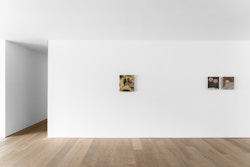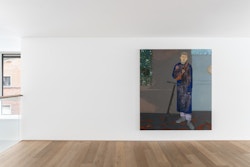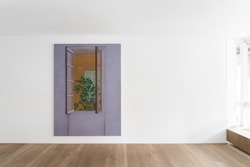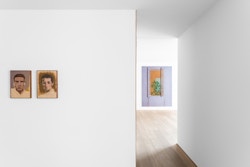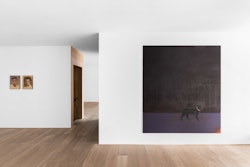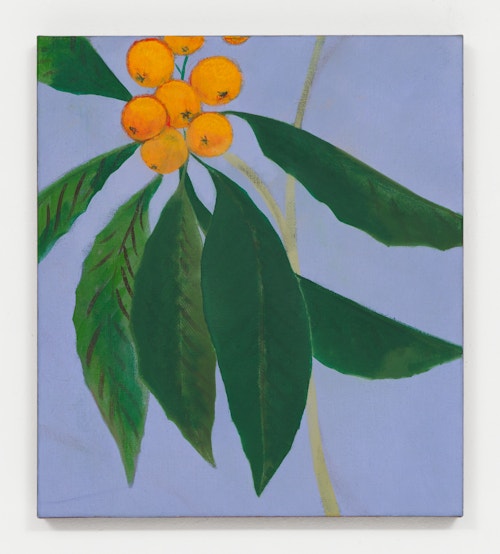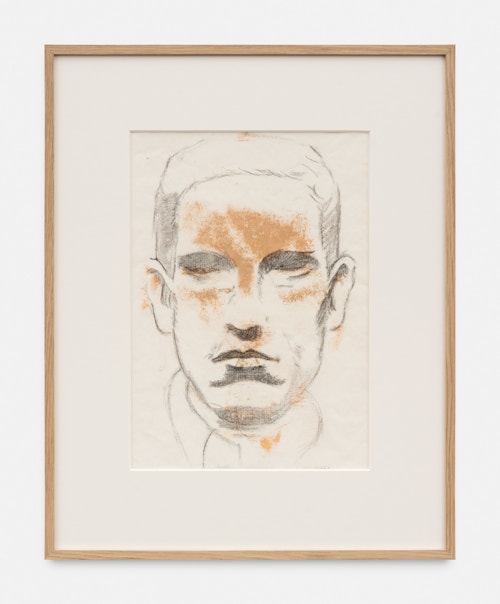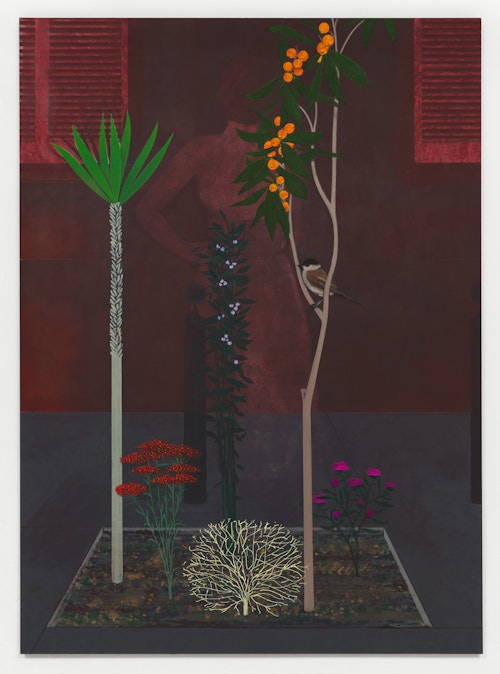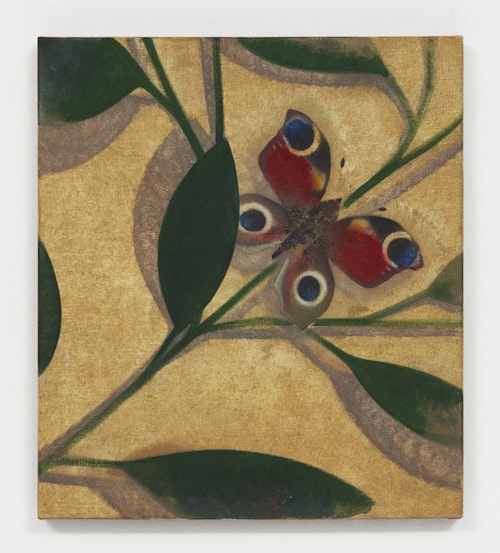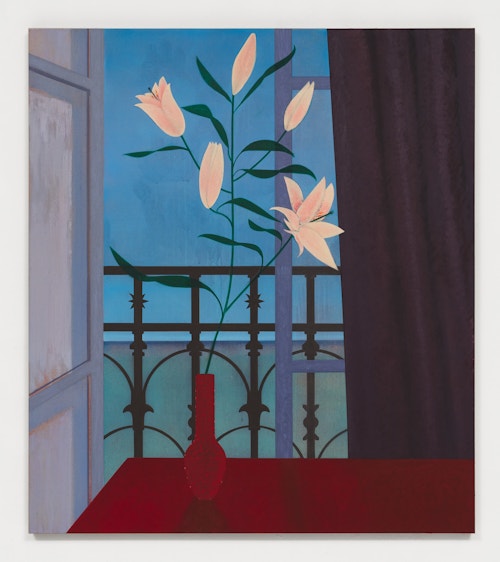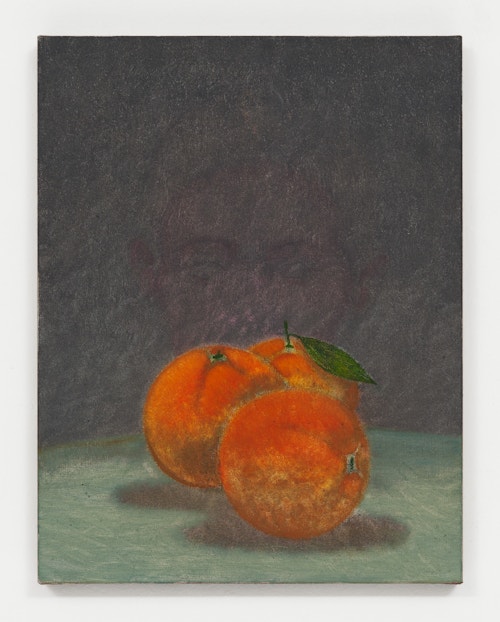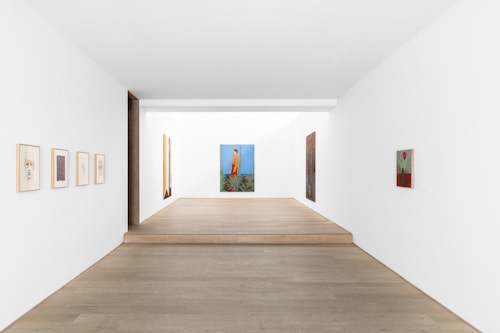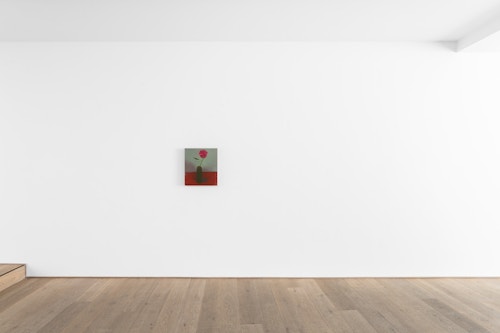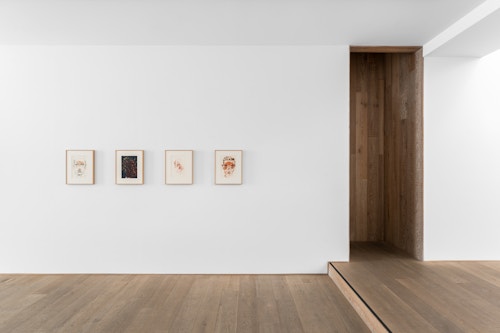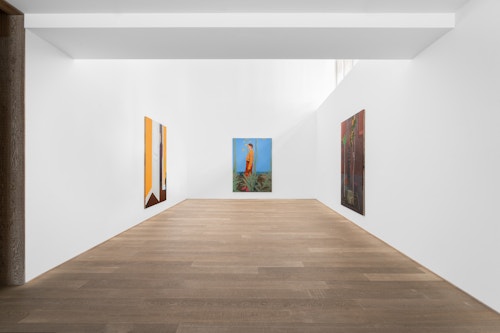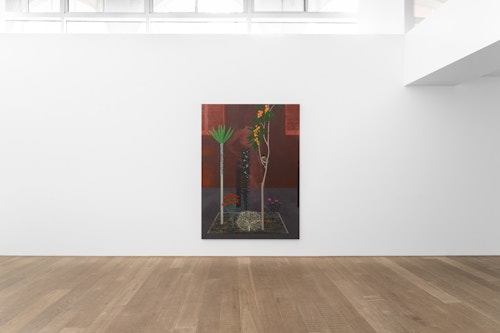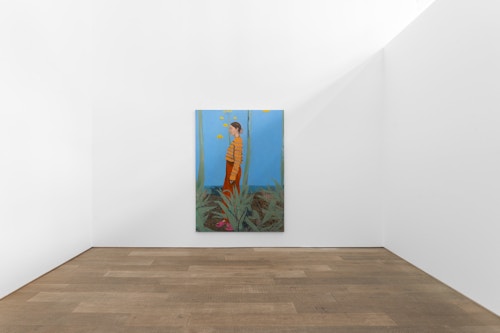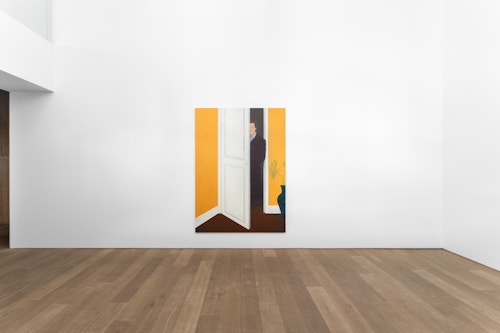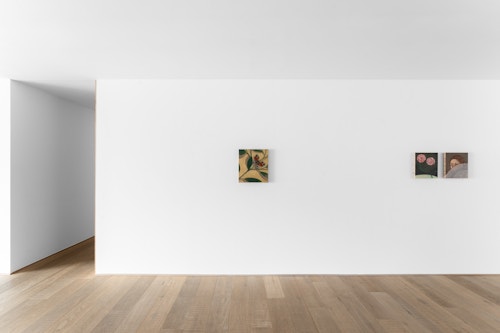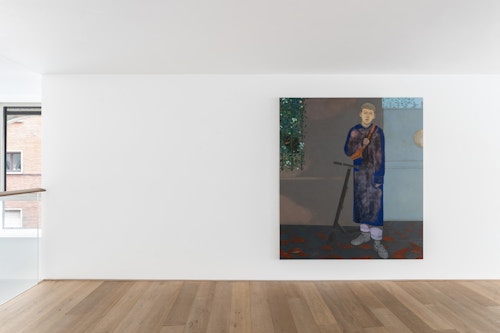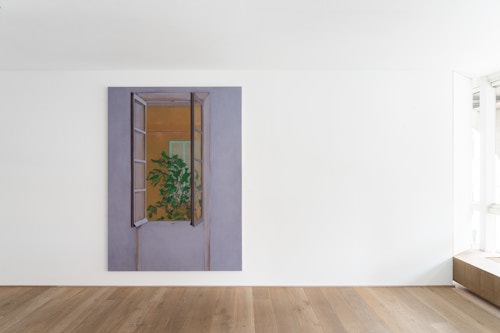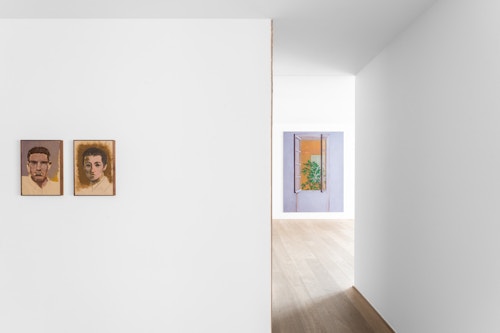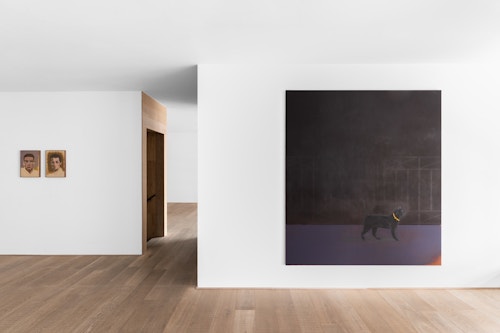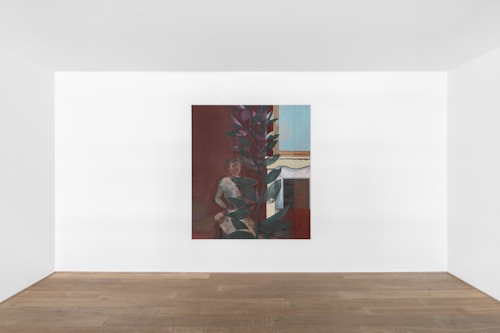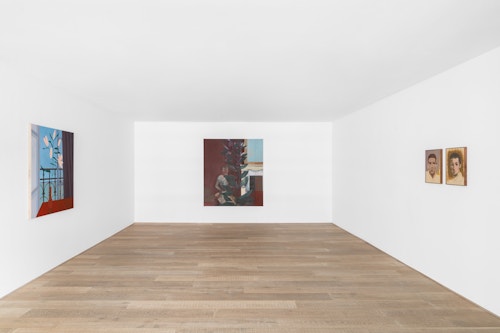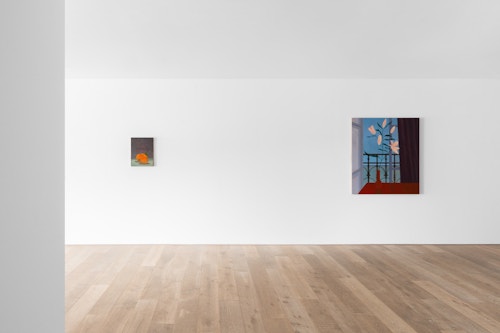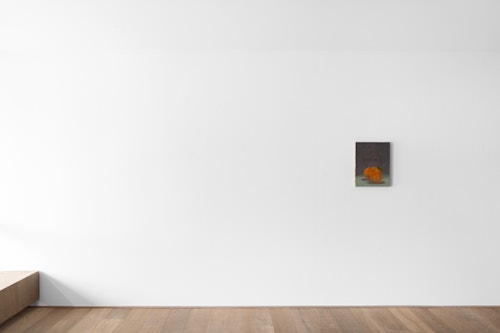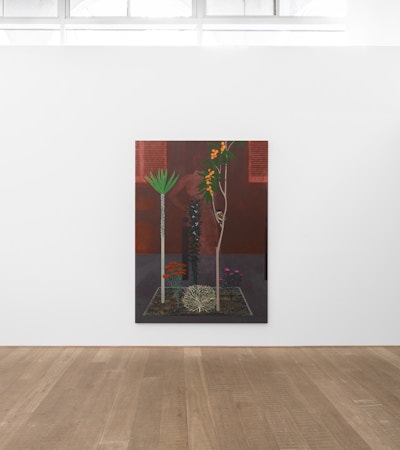
Constantin Nitsche Oranges et Lavande
For his debut exhibition with the gallery, Oranges et Lavande, German painter Constantin Nitsche presents a series of paintings in which everyday scenes are transformed into enigmatic compositions that hover between fiction and reality.

Nitsche’s paintings are inspired by his immediate surroundings: people and interiors, social interactions, animals and nature, street scenes and still lives. These are not rendered literally but distilled—through the filter of memory and act of painting—into atmospheric compositions with few, if any, references to time or place. Interiors are sparse and impersonal, faces are inscrutable and impassive, streets and landscapes lack topographical detail. The indeterminacy is purposeful: Nitsche is not aiming to recreate specific or immediately recognisable scenes, preferring instead to leave their significance open to interpretation. Executed from recollections and photographs, or a mixture of both, Nitsche’s works communicate an intensified and enhanced vision of reality. His figures, for example, are not portraits in the sense of being painted from life, yet they all possess a degree of recognisability. Certain characters reappear in different scenarios, such as the woman in Fleur d’Agave, Micocoulier, Une Mère and Derrière un Eventail, or the yellow-collared black cat. This recapitulation establishes a dialogue between the individual paintings and adds a dramaturgical flow to the exhibition: as if the pictures are stills from a film whose plot remains just out of reach. This open-ended approach encourages viewers to imagine the potential relationships between the characters, the settings and the artist who records them. Nitsche’s transformation of the visual reality results in compositions that feel both fictitious yet plausible, otherworldly but actual. The unusual greenery in La Nonnette, for example, is inspired by a small, planted area observed by the artist in an actual street. Yet everything is flowering and fruiting simultaneously, the colours and forms are ideally balanced and the bird is perfectly poised. Nitsche presents us with a sublimated reality, an image that is almost too good to be true yet eminently believable.
The ghostly female form that can also be seen in La Nonnette offers an insight into Nitsche’s practice. He is an artist who works and reworks his images, repeatedly adding and subtracting colours and elements. The compositions evolve over time and, in some instances, are completely transformed. Shadowy vestiges of previous details can occasionally be glimpsed in the paint layers, all of which hint at a narrative in relation to the complex genesis of the works. Nitsche’s paintings are also exercises in colour and composition, with his style alternating between hard-edged, colour-blocked schemes and delicate brushwork. The tonal relationships, which can be complimentary or contrasting, play a defining role in the creation of atmosphere. Evocative shades of brown, aubergine and grey in combination with vivid hues of green, yellow or pink, for example, only serve to underscore the historical and contemporary dialectic in his work. This push and pull between past and present ebbs and flows in Nitsche’s practice. At times, the art historical references have a clear presence, as evidenced by Le Chant, which is partly inspired by the colour and structure of La Répétition de chant (1917) by Edgar Degas. At other times, the allusions simmer below the surface, as in Rue de Rome, a streetscape that, despite the present-day attributes, has an almost bygone feel. Other works contain a latent symbolism. Agave plants, which are native to South America, can live for thirty years and flower just once in their lifetimes before dying. In Mexican culture, the flowers symbolize love and fidelity, while the roots are a sign of stability in marriage. Fans were once synonymous with a secret language of love. Rubber plants (ficus elastica), as seen in La Petite Visite, are emblematic of abundance, happiness and wealth; oranges with fertility and prosperity; roses with love; lilies with devotion or purity; black cats with good (or bad) luck; the mésange nonnette (poecile palustris) bird with simplicity, spontaneity, marital happiness and fidelity; and butterflies with change, transformation and immortality, amongst other things. Yet for all such inferences, Nitsche’s work remains autonomous, personal and firmly rooted in the here and now.
Time and action are stilled in Constantin Nitsche’s lyrical images of contemporary life: the prelude and denouement of these scenes will never be disclosed. By privileging idealism over verisimilitude, suggestion over specificity, and subjectivity over objective representation, the artist invites viewers into a discreet world that is ripe for contemplation and stimulates the imagination.
Constantin Nitsche (b. 1987, Ludwigshafen, Germany) lives and works in Marseille. He studied painting at the Kunstakademie Düsseldorf. Selected solo and group exhibitions include Blauregen, la Traverse, Marseille (2022); VIOLETTE, O-Town House, Los Angeles (2021); Everything is Personal, TRAMPS, New York (2020); Untitled, Parkhaus im Malkastenpark, Düsseldorf (2019); Salon des Amateurs, TRAMPS, London (2018).
